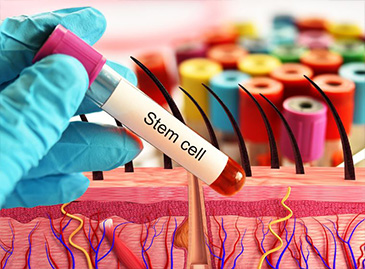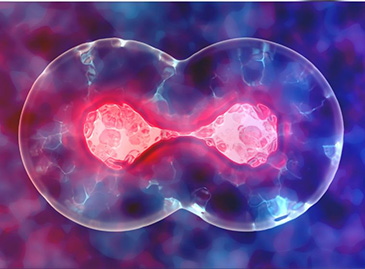
Male Infertility (Azoospermia) - Causes, Treatments
Male infertility is a complex issue that affects millions of couples worldwide. It is a condition where a man is unable to impregnate a woman due to various factors that hinder the production, quality, or delivery of sperm. Infertility can be a devastating diagnosis for couples hoping to start a family, but with advancements in medical science, there are now several causes, treatments, and prevention methods available that we will talk about in this article.
Common Causes of Male Infertility
There are numerous causes of male infertility, ranging from hormonal imbalances to genetic disorders. One of the most common causes is Azoospermia, a condition where there is no sperm present in the ejaculate. Azoospermia can be further classified into obstructive and non-obstructive types. Obstructive Azoospermia occurs when there is a blockage in the reproductive tract, preventing the sperm from reaching the semen. Non-obstructive Azoospermia, on the other hand, is caused by testicular dysfunction, where the testes fail to produce sperm.
Another prevalent cause of male infertility is Oligospermia, which is characterized by a low sperm count. This condition can be influenced by various factors such as hormonal imbalances, genetic disorders, exposure to toxins, and lifestyle choices. It is important to note that Oligospermia does not necessarily mean infertility, as conception is still possible with a low sperm count, albeit with reduced chances.
Types of Male Infertility - Azoospermia and Oligospermia
As mentioned earlier, Azoospermia and Oligospermia are two primary types of male infertility. Azoospermia, as discussed, refers to the absence of sperm in the ejaculate. This can be caused by a blockage in the reproductive tract or testicular dysfunction.
On the other hand, Oligospermia is characterized by a low sperm count. While Azoospermia presents a more significant challenge to fertility, Oligospermia can still affect the chances of conception.
Diagnostic Tests for Male Infertility
To diagnose male infertility, several tests are available that assess the quality, quantity, and movement of sperm. These tests include semen analysis, hormonal evaluation, genetic testing, and imaging studies.
- Semen Analysis is the most common initial test, which examines the sperm count, motility, and morphology.
- Hormonal Evaluation helps identify any hormonal imbalances that may contribute to infertility.
- Genetic Testing is crucial for identifying any genetic disorders that may affect sperm production or function.
- Imaging Studies, such as ultrasounds, can help visualize the reproductive organs and identify any structural abnormalities.
Once the cause of male infertility is determined, appropriate treatment options can be explored.
Treatment Options
Addressing male infertility encompasses a spectrum of approaches tailored to the specific underlying causes, ranging from lifestyle adjustments to medical interventions.
- Lifestyle Modifications play a crucial role in enhancing male fertility, with practices such as maintaining an optimal weight, steering clear of excessive heat exposure, minimizing alcohol and tobacco consumption, and effectively managing stress levels. These lifestyle changes exert a positive influence on various aspects of sperm health, including production, quality, and motility.
In instances where lifestyle adjustments prove insufficient, medical interventions become imperative. Assisted reproductive techniques (ART) emerge as effective solutions to overcome male infertility challenges. Commonly employed methods include:
- In Vitro Fertilization (IVF): This intricate procedure involves fertilizing an egg with sperm outside the body, creating an embryo, and subsequently transferring it to the woman's uterus.
- Intracytoplasmic Sperm Injection (ICSI): This precise technique involves the direct injection of a single sperm into an egg, facilitating fertilization when traditional methods may be less successful.
- Intrauterine Insemination (IUI): In this procedure, specially prepared sperm is introduced directly into the uterus during the woman's fertile window, increasing the likelihood of successful fertilization.
These assisted reproductive techniques aim to manipulate and strategically introduce sperm into the female reproductive system, optimizing the chances of successful fertilization. When considering these interventions, healthcare professionals carefully assess individual circumstances to recommend the most appropriate and effective course of action for overcoming male infertility.
Assisted Reproductive Techniques - Micro TESA and Micro TESE
In cases of severe male infertility, particularly when Azoospermia or severe Oligospermia is present, surgical interventions may become necessary. Two such specialized procedures are Micro TESA (Microsurgical Testicular Sperm Extraction) and Micro TESE (Microdissection Testicular Sperm Extraction).
- Micro TESA (Microsurgical Testicular Sperm Extraction):
- Micro TESA involves the use of a microscope to meticulously identify and extract healthy sperm directly from the testicular tissue. This precise approach is employed to ensure the retrieval of the most viable sperm, thereby enhancing the prospects of successful fertilization. The microsurgical technique allows for a detailed examination of the testes, aiding in the identification and extraction of sperm with optimal quality.
- Micro TESE (Microdissection Testicular Sperm Extraction):
- In contrast, Micro TESE uses advanced microdissection techniques for sperm extraction. This method involves a thorough examination of the testicular tissue to pinpoint specific areas of active sperm production. By precisely locating these areas through microdissection, Micro TESE maximizes the chances of retrieving high-quality sperm for use in assisted reproductive procedures.
While both Micro TESA and Micro TESE share the common goal of extracting sperm directly from the testes, their approaches differ. Micro TESA employs a microscope to carefully identify and extract healthy sperm, while Micro TESE uses microdissection techniques to precisely locate and extract sperm from specific active production areas within the testicular tissue.
These procedures are performed with the overarching objective of optimizing the selection of healthy sperm, thereby increasing the likelihood of a successful reproductive outcome.
Lifestyle Changes to Improve Male Fertility
Apart from medical interventions, certain lifestyle changes can significantly improve male fertility.
- Maintaining a healthy weight is crucial, as obesity can lead to hormonal imbalances and reduced sperm quality.
- Regular exercise and a balanced diet rich in antioxidants, vitamins, and minerals are essential to support optimal sperm production.
- Avoiding excessive heat exposure, such as hot tubs or saunas, can prevent damage to sperm cells.
- Furthermore, reducing alcohol and tobacco consumption, managing stress levels, and getting enough sleep can have a positive impact on male fertility.
Preventing Male Infertility
While certain causes of male infertility remain beyond our control, individuals can proactively take steps to minimize the risk of fertility issues. Avoiding exposure to environmental toxins, including pesticides and industrial chemicals, is crucial for safeguarding sperm health.
Regular check-ups and early detection of any underlying health conditions play a pivotal role in preventing future infertility issues. By adopting these proactive measures, individuals can empower themselves to enhance reproductive health and reduce the likelihood of encountering fertility challenges in the future.
Conclusion
Male infertility is a complex issue that affects many couples worldwide, but with advancements in medical science, there are now several causes, treatments, and prevention methods available.
Understanding the causes and types of male infertility is crucial for effective diagnosis and treatment. Lifestyle changes, medical interventions, and assisted reproductive techniques can significantly improve male fertility.
By taking proactive steps to prevent infertility and seeking support from healthcare professionals and support groups, couples can navigate the challenges of male infertility with hope and resilience.
In Vitro Fertilization (IVF) Price Turkey



